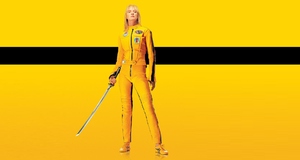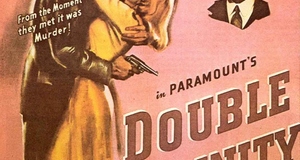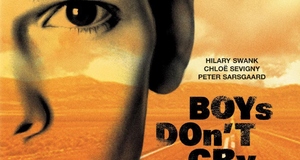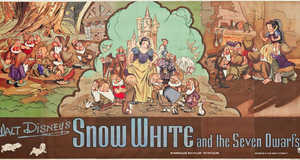Man as Image: Clark Gable, James Dean, and the Audience that Looked at Them
By
2014, Vol. 6 No. 10 | pg. 3/3 | « Like Father Like SonAs a final thought, I believe that the positioning of Gable and Dean on separate sides of the Lacanian Mirror can be summarized best through the parent-child analogy: Gable as the "Ideal-I" is isolated from the spectator because he personifies an ultimate masculine authority figure, resembling a father figure. The protective attitude he displays towards Ellie in It Happened One Night, for example as he covers her with his coat when they have to spend the night outside, confirms this resemblance. Such parental behavior is repeated in his last film, The Misfits (Taylor, 1961), where he also covers a co-star, Marilyn Monroe. Coincidentally, Monroe has stated that she "pretended Clark Gable was [her] father" as a child ("Marilyn Monroe – Clark Gable was my father," n.d.). Dean, on the other hand, appears like the infant in the Mirror Stage, "trapped in his … nursling dependence," in need of parental love (Lacan, 1966, p. 1164), as demonstrated in Rebel Without a Cause when he lies down next to a toy monkey in the fetal position. This reaffirms his childlike lack of a fixed identity and creates a sense of proximity between him and the spectator. The way both Gable and Dean were positioned on screen, together with the ways in which audiences have reacted to their images demonstrates the extent to which masculinities have been fetishized by viewers, even as early as the 1930s. I believe it is important to pay more attention to sexualized and objectified depictions of the male body in cinema; it would be a mistake to overlook something that we are clearly supposed to look at.ReferencesAnger, K. (Director). (1964). Scorpio Rising [Motion Picture]. United States: Puck Film Productions. Belton, J. (1990). Glorious Technicolor, breathtaking CinemaScope, and stereophonic sound.In T. Balio (Ed.), Hollywood in the age of television (pp. 185-211). Boston: Unwin Hyman. Capra, F. & Cohn, H. (Producers) & Capra, F. (Director). (1934). It Happened One Night [Motion Picture]. United States: Columbia Pictures. Cartier, M. (2009). The butch woman inside James Dean, or 'What kind of a person do you think a girl wants?'. In L. Isherwood & M. Althaus-Reid (Eds.),Trans/formations (pp. 105-26). London: SCM. Clark Gable is dead – a last intimate look. (1960, November 28).Life, 92-97. Retrieved from Google Books. Cohan, S. (1997).Masked men: Masculinity and the movies in the fifties. Bloomington: Indiana UP. Connelly, T. (2004). He is as he is – and always will be: Clark Gable and the reassertion of hegemonic masculinity. In P. Powrie, Ann Davies & B. Babington (Eds.), The trouble with men: Masculinities in European and Hollywood cinema (pp. 34-41). London: Wallflower. DeAngelis, M. (2001).Gay fandom and crossover stardom: James Dean, Mel Gibson, and Keanu Reeves. Durham & London: Duke UP. DeMarinis, R. (1969). You, Clark Gable.The Massachusetts Review,10(3), 479-80.JSTOR. DeWitt, J. (2008). James Dean. The American Poetry Review, 37(6), 24.JSTOR. Dyer, R. (1979).Stars. London: BFI Pub. Dyer, R. (1982). Don't look now – Richard Dyer examines the instabilities of the male pin-up. In Screen,23(3-4), 61-73.Oxford Journals. Ellis, J. (1992). Visible fictions: Cinema, television, video. London: Routledge. Fisher, J. (1993). Clarke Gable's balls: Real men never lose their teeth. In P. Kirkham & J. Thumim, You, Tarzan: Masculinity, movies and men (pp.35-51). London: Lawrence & Wishart. GLAAD. (2011, March 25). Elizabeth Taylor at the GLAAD Media Awards [Video]. Retrieved from YouTube. Goodman, E. (1956, September 24). Delirium over dead star.Life, 75-88.Retrieved from Google Books. Hansen, M. (1986). Pleasure, ambivalence, identification: Valentino and female spectatorship. InCinema Journal,25(4), 6-32.JSTOR. Holmes, S. & Redmond, S. (2007). Introduction: What's in a reader?. In S. Holmes & S. Redmond (Eds.), Stardom and celebrity: A reader (pp. 1-11). Los Angeles, CA: SAGE Publications. Koch, G. (1985). Ex-changing the gaze: Re-visioning feminist film theory. New German Critique, 34, 139-53. JSTOR. Lacan, J. (1966). The Mirror Stage as formative of the I function – as revealed in psychoanalytic experience. From J. Lacan, Écrits. In V. B. Leitch (Ed., 2010), The Norton Anthology of Theory and Criticism (pp. 1163-9). New York: W.W. Norton & Co. Marilyn Monroe Video Archives. (2012, November 5). Marilyn Monroe – Clark Gable was my father [Video]. Retrieved from YouTube. Mizejewski, L. (2010).It happened one night. Oxford, UK: Wiley-Blackwell. Mellen, J. (1978). Big bad wolves – masculinity in the American film. London: Elm Tree Books. Item number: 35021. The Bill Douglas Cinema Museum, Exeter, UK. Mulvey, L. (1975). Visual Pleasure and Narrative Cinema. Screen, 16(3), 6-18. Oxford Journals. Neale, S. (1983). Masculinity as spectacle – reflections on men and mainstream cinema.Screen,24(6), 2-17.Oxford Journals. Phillips, M. D. (1932, January 30). The rise of Gable. Picturegoer, 3-4. Item number: 21777. The Bill Douglas Cinema Museum, Exeter, UK. Phillips, M. D. (1934, January 20). An open letter to Clark Gable. Picturegoer, n.pag. Item number: 25328. The Bill Douglas Cinema Museum, Exeter, UK. Robinson, D. (1957). The James Dean story. Sight and Sound, 27(2), 93. Item number: 24240. The Bill Douglas Cinema Museum, Exeter, UK. Stevens, G. (Producer & Director). (1956). Giant [Motion Picture]. United States: Giant Productions, Warner Brothers. Taylor, F. E. (Producer) & Huston, J. (Director). (1961). The Misfits [Motion Picture]. United States: Seven Arts Productions. Weisbart, D. (Producer) & Ray, N. (Director). (1955). Rebel without a cause [Motion Picture]. United States: Warner Brothers. Endnotes1 The Freudian concept of 'scopophilia' was defined by Mulvey (1975) as "pleasure in looking" (p. 11). Mulvey applies this concept to her own theories, describing how [male] cinema audiences look at objectified [female] figures on screen. 2 The Mirror Stage, as developed by Jaques Lacan (1966), signifies the moment when an infant recognizes itself in a mirror. This, according to Lacan, results in the infant's "identification" with the mirror-image. (p. 1164). However, the infant is always divided from the mirror-image by the physical presence of the mirror. According to Lacan this suggests a division beteen the self (= the infant), and an 'Ideal-I' (= the mirror-image) which the self tries to become, but can only ever approximate. 3 For the purposes of this article, 'Mirror' (capitalized) refers to what Jaques Lacan (1966) considers the dividing line between the self and the 'Ideal-I'. 4 Here, I reverse Mulvey's (1975) statement "Woman as Image, Man as Bearer of the Look" (p. 9). Suggested Reading from Inquiries Journal
Inquiries Journal provides undergraduate and graduate students around the world a platform for the wide dissemination of academic work over a range of core disciplines. Representing the work of students from hundreds of institutions around the globe, Inquiries Journal's large database of academic articles is completely free. Learn more | Blog | Submit Latest in Film & Media |


















